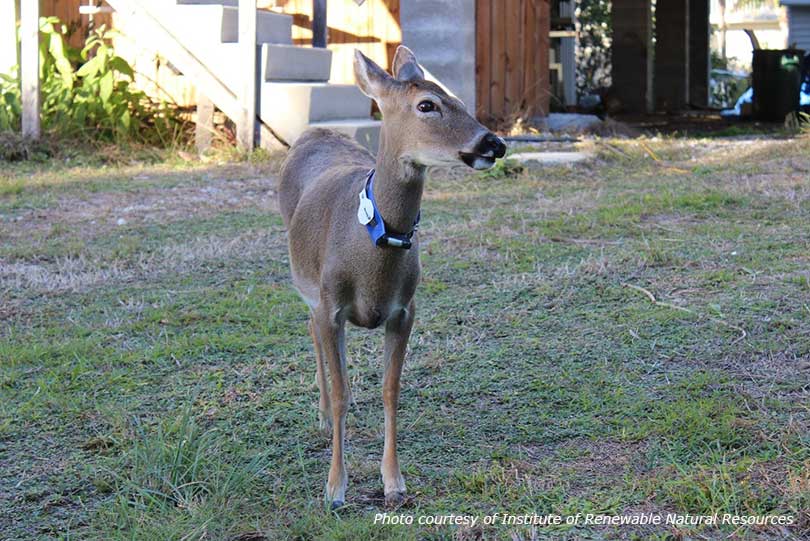Nationwide efforts among several agencies have helped halt the screwworm outbreak in the Florida Keys. A Texas A&M University System institute has been actively involved in the efforts to stop the spread of the pest, which could have devastating effects on wildlife, livestock and domestic pets.
“While there had been no screwworm outbreaks in the U.S. for the past 30 years, one began last July on Big Pine Key, which affected the Key deer population,” Institute director and co-principal investigator for the Key deer study Dr. Roel Lopez told AgriLife Today.
Animal health and wildlife officials released sterile flies as part of their response efforts to prevent the infestation from spreading to new areas.
When the sterile male flies mate with local females, no offspring result. Female flies only mate once in their lifetime, so the fly breeds itself out of existence. But it may take six months to contain the infestation.
Since July, the screwworms spread across more than 20 islands and led to the deaths of 135 Key deer, including 83 that were euthanized to reduce the risk of further infection.
The spread of the screwworm infestation threatens to diminish the endangered Key deer population, which has an estimated population of just 875, according to Lopez.
“With the U.S. Fish and Wildlife Service as the lead agency, we have been researching screwworm impacts and spatial distribution, as well as deer population density based on sex ratio and age,” Lopez said.
Lopez said Texas A&M institute’s efforts have been focused on helping determine how this endangered species will fare following the infestation. The staff and research scientist have conducted multiple surveys to obtain the current estimate of the population.
Their research has indicated that all but 10 of the Key deer deaths from screwworm infestation were males, according to Dr. Nova Silvy, Regents Professor in Texas A&M’s wildlife and fisheries sciences department.
“Screwworms can have devastating effects on livestock populations, so an outbreak could potentially affect many agricultural operations, depending on how widely it spreads, “ Dr. Israel Parker, a research scientist at the institute in College Station and another co-principal investigator for the study, told AgriLife Today.
Interagency efforts, including preventative treatment and screwworm fly eradication, have been highly successful in slowing the outbreak. But as Key deer begin giving birth in the spring, it could lead to further screwworm infestations.
“The flies could infest the afterbirth or the navels of the fawns, which is a common problem with calves in areas with screwworms,” Silvy said.
The research teams have placed radio collars on 30 Key deer does to help determine if they may be vulnerable to screwworm flies while giving birth.
A long-term population increase of about 3.5 percent annually should continue, according to Lopez. Key deer populations will continue to be viable because the adult males that died can be replaced by younger males that can mate with multiple does.
“Working together, our agencies have been able to stave off further screwworm infestations,” Lopez said.

